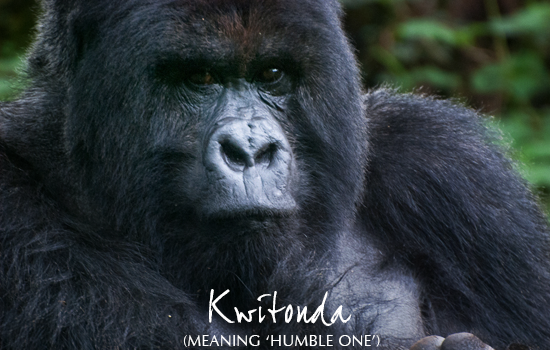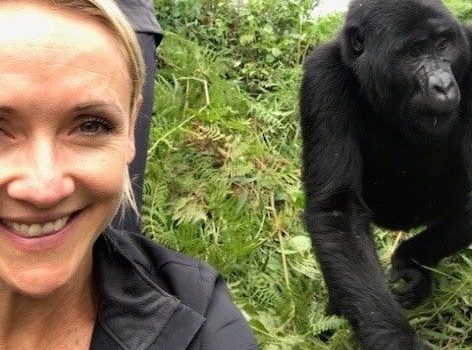As exciting as it is that Rwanda and Uganda have re-opened for tourism and Gorilla trekking is possible again, it is important to note that set Covid-19 guidelines that must be observed as gorillas share 98 percent of our DNA, they are susceptible to human respiratory viruses.
What has changed?

Updated regulations from authorities in the region
UGANDA
A maximum of 8 tourists shall be allowed to track a gorilla group per day.
A maximum of 6tourists shall be allowed to track a chimpanzee group at a time.
Tourists must keep a distance of not less than 10 metres (30 feet) away from the gorillas and chimpanzees during this period.
At the briefing points, visitors and staff shall wash hands or sanitise and have their body temperature taken.
Briefing and debriefing shall be done in small groups of 8 tourists after they have been assigned gorilla families for tracking.
Tourists, staff, and porters who, during the briefing, are observed to be sick shall not be allowed to track. These include anyone with signs of flu, and those who report to have diarrhoea, stomach upsets and malaria among others.
All visitors, staff and trackers must wear masks.
The assigned Uganda Wildlife Authority (UWA) guides shall ensure there is social distancing of 2 metres (6 feet) among the tourists while tracking, where practical.
Before the gorilla and chimpanzee viewing commences, all people in the group shall sanitise their hands again.
Ttourists shall carry light equipment to minimise the need for porters while they undertake the tracking. This information shall be communicated to potential tourists through the tour operators and other UWA communication platforms such as the UWA website and social media platforms.
Due to the reported side effects of wearing masks for long periods and in high altitudes, visitors shall take frequent breaks during the tracking give themselves time to breathe fresh air.
During these breaks, social distancing shall be strictly observed.
In case a tourist or accompanying members of the team experiences a health related problem, UWA staff shall apply the established evacuation and first aid guidelines to move the affected individual from the field.

RWANDA
All international travellers must test negative for Covid 72 hours before departure and will undergo another test upon arrival in Rwanda.
All participants must test negative 48 hours before the trekking date.
Anyone with high temperatures and other signs of sickness including flu and cough will not be allowed to participate.
Anyone over the age of 15 may participate
In addition to a negative Covid test, guests must wear a face mask at all times and then a fresh, surgical mask when they come in close proximity to the gorillas.
The maximum number of guests per group has been reduced from 8 to 6.
The required social distance between visitor and primate has increased from 7 metres to 10 metres (23 to 33 feet).
When entering and leaving the Volcanoes National Park, guides sanitize and spray down all footwear with alcohol.
There are twelve gorilla families living in Volcanoes National Park, which are fully habituated. Visitors gather at the Volcanoes National Park headquarters in Kinigi at 7am, and are allocated a family group on the day according to fitness levels, as well as being briefed on protocols and rules for visiting the gorillas.
Hikes up to their various locations can last anything from 30 minutes to four or more hours, reaching an altitude of between 2,500m and 4,000m. The undergrowth can be thick and muddy and appropriate walking gear is required. Porters are available to carry backpacks and cameras, as well as to offer a helping hand along the route
- Maximum viewing duration of any group is 1 hour per day.
- Maximum number of guests per gorilla trekking excursion is 6.
- Please do not consume any food or drink while in the presence of gorillas.
- Smoking is not allowed.
- Spitting in the park is strictly prohibited.
- While gorilla sightings and encounters are very reliable, viewing is dependent on variables such as weather and trekking conditions. Gorilla trekking will take place regardless of prevailing weather conditions.
- When with the gorillas, please keep voices low. Do not make any rapid movements that may cause alarm.
- Should one need to cough or sneeze, mouths and noses must be covered and one must turn away from the gorillas.
- If a gorilla should charge or vocalise, do not be alarmed. Stand still, look away from the gorilla and follow the guide’s instructions.
- The minimum age for gorilla viewing is 15 years – this is for reasons of safety and possible disease transmission, with children under this age being more prone to infection.
- Again, to minimise possible transmission of human diseases, visitors are requested to maintain a distance of 10 metres (33 feet) from the gorillas. Guests that display cold, flu or other respiratory tract symptoms will not be allowed to join a gorilla trek as the park office have the authority to deny any such guest/s access. In such instances, the cost of the gorilla tracking permit will be refunded.
- Gorilla trekking is strenuous and should guests have any condition that could be triggered by high altitude or vigorous exercise, we recommend that all guests consult with their general practitioner well in advance of their travel date as this will enable them to comply accordingly with said protocol (by having an issued certificate of health) and utilize the opportunity to discuss other sensible health precautions.
- No flash photography is permitted when taking images of the gorillas.
- Guests are required to wear masks at all times whilst on trekking, as well as at the lodge when they are in the main areas.
Getting up close to these incredible creatures is a life changing experience
Normally you have to book long in advance and it is difficult to secure a gorilla trekking permit. With few travellers in the region, now is the time to plan your trip.
If this has always been on your bucketlist, get in touch to make it happen



